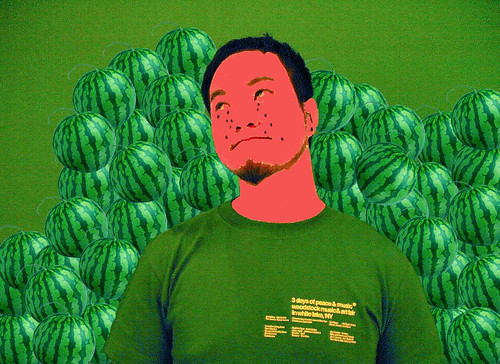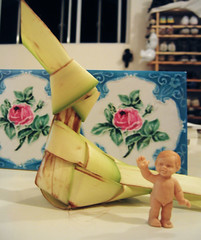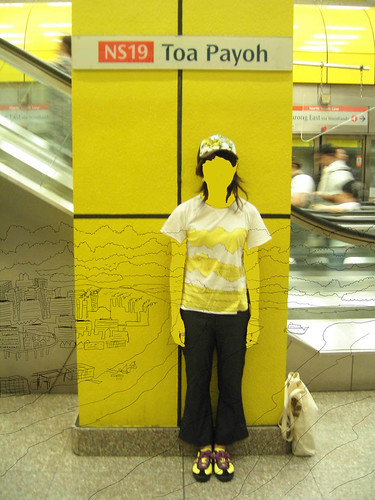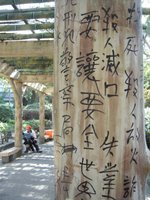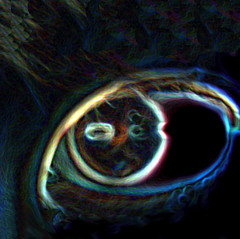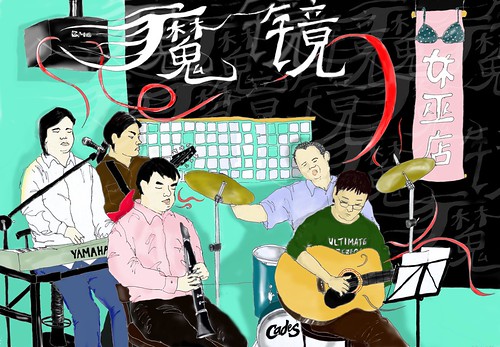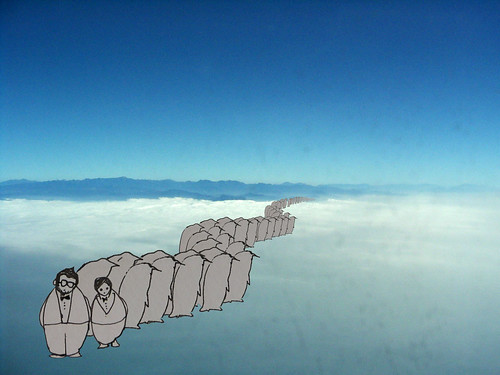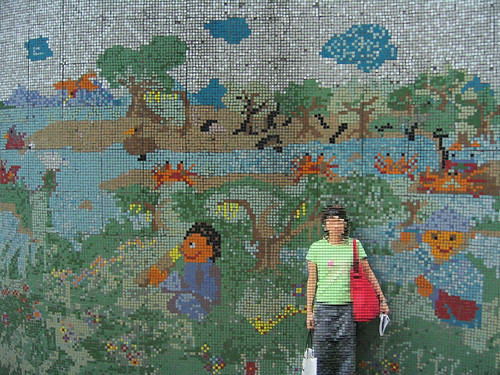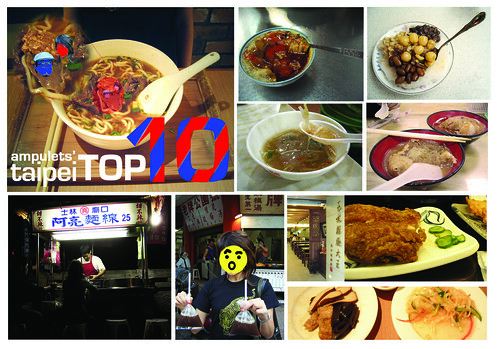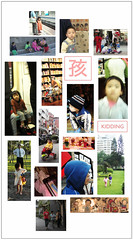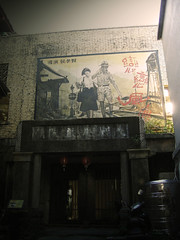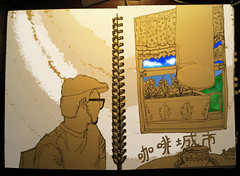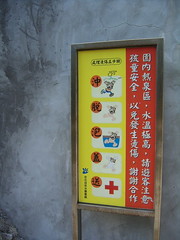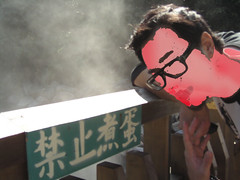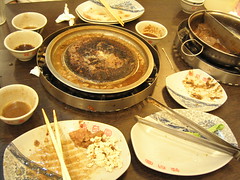
Great Moment,1992: Print by Chng Seok Tin in response to Archimedes' "Give me a place to stand, and with a lever I will move the world."
Today, J and I spent our lunch break at "Blossoming of the Pomegranate: Documenting 30 Years of Chng Seok Tin's Art", curated by independent art space p-10 and Koh Nguang How. By extension it documents 30 years of Chng Seok Tin's life - and what a life!
What is important to me is not how to create pictures, but how to live.The exhibition is timely. This year, together with pop composer Dick Lee and entertainer Jack Neo, Chng Seok Tin finally received the Cultural Medallion - Singapore's highest state accolade for culture and the arts.
She was also earlier given the Woman of the Year award in 2001. Then, in response to the laudatory remarks about her courage in continuing to make art after an accident in 1988 caused her to lose 80% of her sight, she had said:
I have no husband, no children, no car, no house; I have nothing. Don't learn from me how to be poor.Perhaps she was smiling - so slightly - when she said this. I vaguely remember from my few very brief exchanges with her that her seemingly straightforward manner belies the humour and irony contained in many of her observations.
It is the same with her writing. Besides being an artist, Chng is also a prolific writer. I have a collection of her essays 多心眼 (trans: "the over-sensitive eye"? ironic, given her visual impairment). Though these short pieces are brisk in their expression, the observations are sometimes playful and almost always expansive.
 This internal dialogue - that's what I like about Chng's work- and life? Its forthrightness. But also its contemplation. Its concerns are moral in its insistent examination of human struggle and fallibility. Yet its tone is never quite moralistic. So in her art, the individual (heart, mind, life - artist, viewer, man, woman) can be magnanimous and must be so. Yet there is also an awareness that there is something even and always greater than the most magnanimous self.
This internal dialogue - that's what I like about Chng's work- and life? Its forthrightness. But also its contemplation. Its concerns are moral in its insistent examination of human struggle and fallibility. Yet its tone is never quite moralistic. So in her art, the individual (heart, mind, life - artist, viewer, man, woman) can be magnanimous and must be so. Yet there is also an awareness that there is something even and always greater than the most magnanimous self. In the same way, her life can play like a dialogue between teacher and student. Chng Seok Tin is a beloved teacher of, by now, at least a couple of generations of art students; yet she is herself a fervent student, scholar. Take the start of her life in art. Though she was already a school teacher in the 70s, it was Chng's encounter with art in teachers' college and artist Tang Da Wu's encouragement that led her to be a student again in Central St.Martin. She eventually graduated with a BFA from Hull (London was too costly after a year). This meant that the Chinese-educated Chng had to acquire sufficient proficiency in English. Later, she was admitted to Atelier 17 in Paris, and completed her MA in Art history at New Mexico and an MFA at Iowa. Although she was offered a job in HK with a publishing house, she chose to return to Singapore because she saw a need for her as an art teacher.
It is therefore perhaps apt that Chng Seok Tin is best known as a printmaker. Because with print, the hand does not immediately create the image on paper. The process - to simplify - consists of 2 key parts. First, the artist marks another surface (e.g. wood, copper plate, lino) - by carving, etching, or even laying on other textured materials - creating first either a negative or positive mirror image of the final image. Next, the ink/paint that is applied on that surface is then transferred/"printed" onto the paper. Often, a complete print is made up of impressions from several different plates/prints, and several layers of colours.
I am not sure if this is entirely true (aiyah, in my desire for poetry, I would carry a metaphor too far)...The printmaker must first hold in his mind's eye the complete/final image or its closest proxy, so that in execution, he/she will be able to constuct accurately in parts and in reverse - learning to see what is dark or light, always discerning what is and what is not. But in printing the final image, the precision and discernment must contend with the sleightness of hand, and the improvisational liberty of intuition.
________________________
p/s: Unfortunately, the show at p-10 is officially over. If you drop them a note, maybe the good folks at p-10 will open up their space for you .


